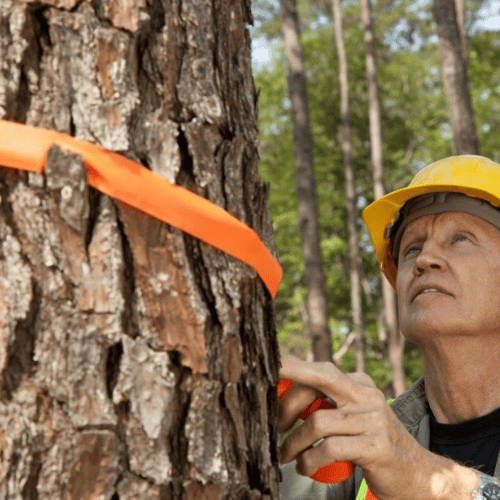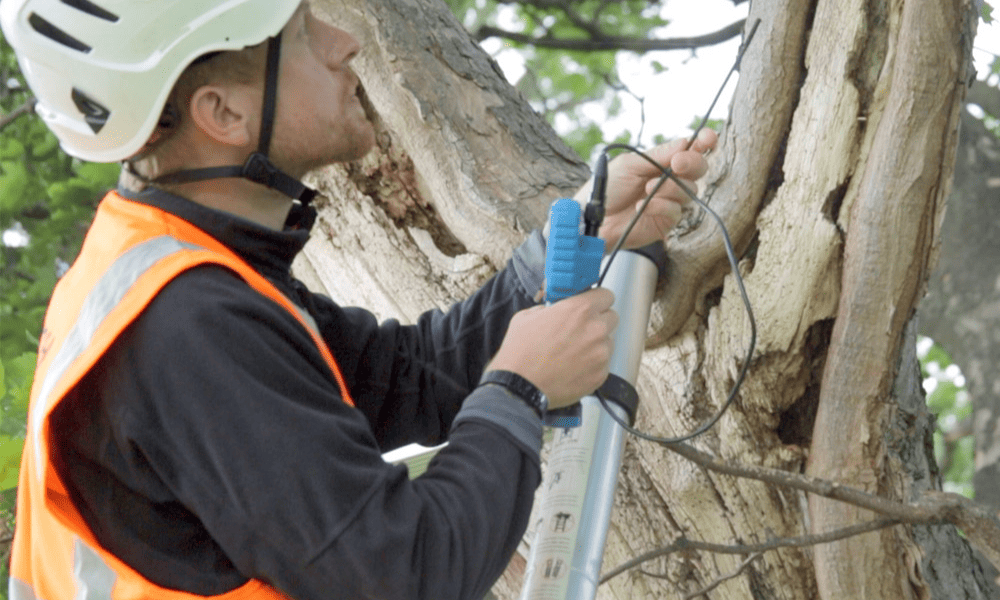Arboricultural impact assessments (AIA) are a key part of ensuring that the work that arborists do doesn’t have negative consequences on the surrounding environment. By studying and anticipating the potential impacts of tree work, AIA’s can help arborists mitigate any harmful effects. In this blog post, we’ll take a closer look at what an AIA is and how it can benefit both arborists and their clients.
Table of Contents
What Is an Arboricultural Impact Assessment?
An Arboricultural Impact Assessment (AIA) is a report that sets out the potential impact of a proposed development on trees and woods. It is usually carried out by an arboricultural consultant and submitted as part of a planning application. The assessment will consider the likely effects of the development on tree health, tree growth and tree stability, as well as the impact on the amenity value of the trees. It is important to note that an AIA is not aTree Preservation Order (TPO) and does not in itself protect trees from development. However, the assessment can be used to inform the decision-making process and help to minimise the impact of development on trees.
Should I Invest in an Arboricultural Impact Assessment Report?
 Arboricultural Impact Assessment Reports, or AIAs, are reports that arborists prepare to assess the potential impact of a proposed development on existing trees. The purpose of an AIA is to provide information about the risks and benefits of the proposed development so that decision-makers can make informed choices about whether or how to proceed.
Arboricultural Impact Assessment Reports, or AIAs, are reports that arborists prepare to assess the potential impact of a proposed development on existing trees. The purpose of an AIA is to provide information about the risks and benefits of the proposed development so that decision-makers can make informed choices about whether or how to proceed.
Arborists who prepare AIAs typically have experience in tree biology and risk assessment, and they use this knowledge to evaluate the potential impact of the proposed development on the health, structure, and function of existing trees. While AIAs are not required by law, they can be very helpful in protecting trees from being unnecessarily damaged or removed during construction projects. If you are considering a construction project that could potentially impact existing trees, investing in an AIA may be a good way to help ensure that those trees are protected.
How Many Days Will Be Required to Prepare an Arboricultural Impact Assessment?
The answer to this question depends on a number of factors, including the size and complexity of the project, the availability of information, and the time of year. Generally speaking, it will take approximately 10 days to prepare an Arboricultural Impact Assessment (AIA).
This timeframe can be shortened or lengthened depending on the specific needs of the project. If additional information is required, or if there are unforeseen complications, the process may take longer. Conversely, if the project is relatively small and straightforward, the AIA can be completed in a shorter period of time. Ultimately, the amount of time required to prepare an AIA will vary depending on the individual project.
Why Is an Arboricultural Impact Assessment Report Important?
Arboricultural Impact Assessment Reports (AIARs) are important for a number of reasons.
- First, they help to identify the potential impact of proposed developments on trees and woodlands. This includes identifying any trees that may be affected by the development, as well as any potential risks to tree health and stability.
- Second, AIARs can help to assess the need for tree protection measures during construction works. This is essential in ensuring that trees are not damaged or destroyed during the course of development.
- Finally, AIARs can also provide valuable information on the long-term management of trees and woodlands following the completion of a development project. This can help to ensure that these important assets are properly safeguarded and given the best chance to flourish in the future.
Who Can Generate an Arboricultural Impact Assessment Report?
An Arboricultural Impact Assessment report is generated by a Registered Consulting Arborist. The purpose of the report is to provide information about the potential impact of a proposed development on existing trees and shrubs. The report includes an assessment of the risk to existing vegetation from the proposed development, as well as recommendations for mitigating the impact of the development on existing vegetation.
Prerequisites of Arboricultural Impact Assessment Reports
Prerequisites of Arboricultural Impact Assessment Reports are important for the health of your trees. These prerequisites help to identify the tree species, their location, and the impacted root systems. In order to comprehensively understand the potential risks and impacts of a proposed development on trees, an arborist will need to assess the tree species, their location, and the impacted root systems. The assessment will help to identify potential problems that could arise from the development, such as reducing the growth potential of the trees or causing them to die. The Prerequisites of Arboricultural Impact Assessment Reports will help to ensure that your trees are healthy and can withstand the proposed development.
In order to assess the potential impact of a development on trees, the following information must be included in the report:
- A site plan showing the location of all existing trees within the development site boundary and their relationship to the proposed development
- A schedule of all existing trees within the development site boundary
- An assessment of the condition of all existing trees within the development site boundary
- A tree risk assessment for all existing trees within the development site boundary
- A methodology for assessing the potential impact of the proposed development on existing trees
- An assessment of the potential impact of the proposed development on existing trees
- Identification of those trees that are likely to be affected by the proposed development
- Recommendations for avoiding, mitigating or compensating for any adverse impact that cannot be avoided
- Further investigations that may be required In order to compile an accurate and comprehensive
Arboricultural Impact Assessment Report, it is essential that an arborist has access to all relevant information about the proposed development. This includes plans, drawings and specifications.
The arborist should also liaise with other consultants involved in the project, such as planners, engineers and architects, to ensure that all relevant information is taken into account.Once all this information has been gathered,the arborist will assess the potential impact of the proposed development on each individual tree within the site boundary. This assessment will consider factors such as tree height, crown size and root system depth. The arborist will also take into account other factors that may affect tree health, such as soil type and drainage.Based on this assessment,the arborist will identify those trees that are likely to be impacted by the proposed development and make recommendations accordingly.
In some cases, it may be possible to avoid or mitigate any adverse impact through appropriate tree selection or siting. In other cases, it may be necessary to compensate for any loss or damage through planting new trees or landscaping works. It should be noted that an Arboricultural Impact Assessment Report is just one part of a wider environmental assessment process.
Other types of environmental assessment reports may also be required, such as an Ecological Impact Assessment or a Flood Risk Assessment. The duties of an arborist do not extend beyond compiling an accurate and comprehensive report; it is up to planners and decision-makers to determine how best to avoid or mitigate any adverse impacts identified in the report.
What Type of Information Can I Expect from an Arboricultural Impact Assessment Report?
An arboricultural impact assessment report provides information about the potential impact of a proposed development on existing trees. The assessment may consider the construction method, type of development, and other factors that could affect tree health or stability. It is important to note that an arboricultural impact assessment is not a tree risk assessment, which assesses the risk of individual trees failing.
Rather, it assesses the potential cumulative impacts of multiple factors on tree health and stability. The arboricultural impact assessment report will typically include information on the number and species of trees affected by the proposed development, as well as an evaluation of the risks to these trees. In some cases, the report may also recommend measures to mitigate the potential impacts of the proposed development.
Conclusion
Arboricultural Impact Assessments (AIA) are an important part of the planning process for any construction project that may have an impact on trees. If you’re thinking about doing some construction work and want to make sure you don’t damage any nearby trees, give us a call and we can help you out with an AIA. We offer competitive rates and our team of experts will work with you to get the assessment done quickly so you can move forward with your project. Have questions or want to know more? Let us know in the comments below!
References:
Arboricultural Impact Assessment

